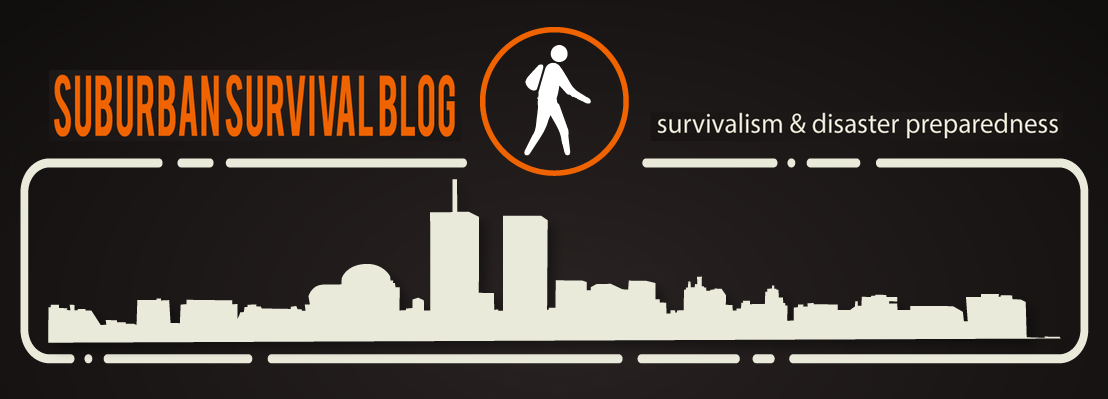Home security systems not only provide essential protection for loved ones and property, contributing to peace of mind, but they also play a pivotal role in threat protection by deterring potential burglars — with 83% looking for signs of an alarm before attempting a break-in [1]. This highlights the importance of implementing robust threat protection measures as part of home security strategies. In addition to burglary prevention, modern home security systems offer home automation features that enhance convenience and energy conservation, further underscoring their role in safeguarding homes [1].
Exploring the depths of threat protection within the realm of home security, this blog post looks to shed light on understanding home security threats, identifying the key components of a threat detection plan, implementing strategies for homeowners, and the essentials of maintaining and upgrading security systems. By delving into these critical areas, homeowners can fortify their homes against potential threats, ensure a higher level of safety, and potentially enjoy benefits such as reduced insurance premiums [1].
Understanding Home Security Threats
Understanding the multifaceted nature of home security threats requires a comprehensive approach that addresses both physical and digital vulnerabilities. Here are some pivotal considerations:
-
-
- Secure all possible entry points, including doors, windows, balconies, and garages, to prevent unauthorized access [7].
- Enhance perimeter security with walls, fences, and gates, but be mindful of creating potential hiding spots for burglars [8][12].
- Consider the installation of gravel driveways, surveillance cameras, and burglar alarms as additional deterrents [14].
-
- Environmental and Behavioral Factors
-
-
- Maintain landscaping to reduce cover for burglars by keeping bushes and trees trimmed [9].
- Be cautious about leaving spare keys outside or packaging from expensive items by the curb, as these can attract burglars [8].
- Adjust outdoor lighting to eliminate dense pockets of shadows that could serve as hiding spots [8].
-
- Digital Security and Smart Home Devices
By addressing these areas, homeowners can significantly reduce the likelihood of burglaries and enhance their overall threat protection strategy.
Key Components of a Threat Detection Plan
To ensure a comprehensive approach to threat protection in home security, focusing on key components of a threat detection plan is essential. Here’s a breakdown:
- Regular Maintenance and Professional Inspections:
- Innovative Threat Prevention Solutions:
-
-
- Next-Generation Antivirus (NGAV) solutions for both known and unknown attacks [16].
- User Behavior Analytics (UBA) to monitor and assess user activity [16].
- Deception Technology to counteract infiltrated threat actors [16].
- Ransomware Protection for identifying and responding to ransomware threats [16].
-
- Integration and Surveillance:
-
- Smart Home Integration: Connect various smart devices for enhanced security [17].
- Access Control: Implement keyless entry systems for better access management [17].
- Surveillance Systems: Utilize CCTV cameras and motion detection technology for area monitoring [17].
- Fire Safety Protocols: Install smoke detectors and fire alarms [17].
- Emergency Response: Utilize panic buttons and 24/7 monitoring services for emergencies [17].
- Securing Entry Points: Reinforce doors and secure windows to prevent unauthorized access [17].
- Lighting Solutions: Implement motion-activated lights and smart lighting controls [17].
These components, when integrated into a home security strategy, significantly bolster threat protection, offering homeowners peace of mind and enhanced safety.
Implementation Strategies for Your Home
To effectively implement threat protection strategies in your home, consider these critical steps:
- Securing Your Modem and Router:
-
-
- Replace outdated equipment every five years for ongoing support and security updates [20].
- Utilize a surge protector or UPS to safeguard against power surges [20].
- Disable remote management and enable multi-factor authentication to enhance security [20].
- Establish strong passwords and ensure automatic firmware updates are enabled [20].
- Activate the router’s firewall and consider website filtering with services like quad9 or OpenDNS [20].
- Regularly reboot your modem and router to refresh connections and clear potential malware [20].
-
- Wi-Fi Security Enhancements:
- Comprehensive Network Monitoring and Security System Implementation:
-
- Monitor connected devices and block unrecognized ones to prevent unauthorized access [20].
- Choose between wired and wireless security systems based on DIY preference [22].
- Install essential components: sensors, control panel, motion detectors, and security cameras [22].
- Connect and test the security system as per the manual instructions [22].
- Strengthen your home network with strong passwords, antivirus software, and possibly a router VPN [23].
- For optimal installation and maintenance, consider hiring a professional service [15].
These strategies underscore the importance of a multi-layered approach to threat protection, ensuring both digital and physical aspects of home security are robustly addressed.
Maintenance and Upgrading Your Security System
Maintaining and upgrading a home security system is crucial for ensuring its effectiveness in threat protection. Here’s a breakdown of recommended practices:
- Daily and Weekly Maintenance Tasks:
- Monthly, Quarterly, and Annual Checks:
-
-
- Monthly: Perform software updates. Conduct environmental checks for potential vulnerabilities. Schedule professional inspections if necessary. Verify backup systems are functioning correctly [25][26].
- Quarterly: Test audio and visual alarms. Review and perform software or firmware updates. Inspect the property for new security vulnerabilities [25].
- Annual: Conduct a thorough inspection of all components, wiring, and connections. Consider professional maintenance services to ensure all parts of the system are in optimal condition [25].
-
- Upgrades for Enhanced Security:
- Upgrade to high-definition or 4K cameras for better clarity and coverage. Integrate your system with a smart home platform for easier control and monitoring. For increased convenience and security, consider advanced access control systems, such as keyless entry pads or smart locks. Ensure outdoor cameras and sensors are adequately weatherproofed and invest in a backup power source like a UPS to keep your system operational during power outages [27][28].
FAQs
Q: What is the significance of threat protection in maintaining security?
A: Threat protection is crucial for safeguarding business data and systems against cyber threats. Without advanced threat protection (ATP), businesses are more vulnerable to cybercriminal attacks, which can result in severe issues like data breaches, malware infections, and ransomware attacks.
Q: Can you describe the four components of a defense in depth strategy?
A: The defense in depth strategy comprises four key elements:
- Network Security Controls – This involves the scrutiny of network traffic as a primary security measure.
- Antivirus Software – It’s vital for defending against viruses and malware.
- Data Integrity Analysis – This step ensures that data remains accurate and unaltered.
- Behavioral Analysis – Monitoring and analyzing behavior to detect any unusual or suspicious activity.
Q: What are the stages involved in threat analysis?
A: Threat analysis is a structured process that includes four stages:
- Identifying assets that need protection.
- Recognizing potential threats to these assets.
- Analyzing vulnerabilities that could be exploited by threats.
- Developing countermeasures or safeguards to defend against the identified risks.
Q: How would you define ‘protection in depth’ within security?
A: Protection in depth, or defense in depth, is a comprehensive security strategy that employs multiple layers of defense to safeguard an organization’s assets. The concept is designed to provide backup security measures in case a primary defense fails, ensuring that threats are thwarted at various stages.
References
[1] — https://www.usnews.com/360-reviews/services/home-security/why-get-a-home-security-system
[2] — https://surelockkey.com/blog/importance-of-the-home-security-system/
[3] — https://reolink.com/blog/why-you-need-a-home-security-system/
[4] — https://stradaservices.com/about-us/blog/home-security-benefits/
[5] — https://www.micrologicwv.com/4‑reasons-why-home-security-matters/
[6] — https://www.apialarm.com/blog/protection/4‑most-common-home-security-threats/
[7] — https://www.linkedin.com/pulse/most-common-home-security-threats-alok-sharma
[8] — https://www.familyhandyman.com/list/11-home-security-mistakes-that-put-you-at-risk/
[9] — https://staysafe.org/home-safety/home-security-assessment-evaluating-vulnerabilities/
[10] — https://www.originwirelessai.com/insights/top-5-smart-home-security-risks-and-how-to-prevent-them/
[11] — https://techspective.net/2021/12/27/threats-to-smart-home-security-and-how-to-counter-them/
[12] — https://blog.detection-technologies.com/the-four-elements-which-form-an-effective-security-system
[13] — https://safetyzone.us/blogs/security-guard-services-in-california/7‑essential-elements-of-security-plans
[14] — https://alpinelockandsafe.net/the-ultimate-guide-to-your-home-security-system-maintenance/
[15] — https://tekplexsolutions.com.au/tips-to-maintain-your-home-security-system/
[16] — https://www.cynet.com/advanced-threat-protection/threat-detection-and-threat-prevention-tools-and-tech/
[17] — https://homesafeguardpro.com/7‑essential-elements-of-a-complete-home-security-plan
[18] — https://chascrazycreations.com/security-monitoring-7-key-components-of-your-home-security-system/
[19] — https://www.vivint.com/resources/article/parts-of-your-alarm-system
[20] — https://www.cisecurity.org/insights/newsletter/how-to-secure-your-home-network-against-cyber-threats
[21] — https://www.linkedin.com/advice/1/how-can-you-use-threat-modeling-secure-smart-homes-maehf
[22] — https://www.security.org/home-security-systems/how-to-secure-home/
[23] — https://www.cisa.gov/news-events/news/home-network-security
[24] — https://www.contractors.com/essential-materials-installing-residential-security-system/
[25] — https://staysafe.org/home-safety/home-security-system-maintenance/
[26] — https://pacificsecuritygroup.com.au/blog/how-to-properly-maintain-your-security-system-to-ensure-optimal-performance/
[27] — https://www.momoftwolittlegirls.com/maintain-your-home-security-system/
[28] — https://www.alarmliquidators.com/blog/how-often-should-you-update-your-home-alarm-systems/








